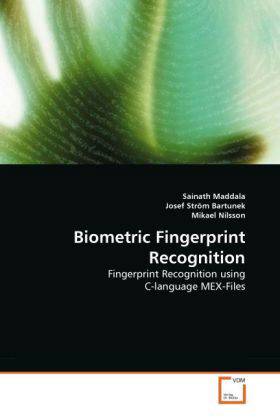
- Afhalen na 1 uur in een winkel met voorraad
- Gratis thuislevering in België vanaf € 30
- Ruim aanbod met 7 miljoen producten
- Afhalen na 1 uur in een winkel met voorraad
- Gratis thuislevering in België vanaf € 30
- Ruim aanbod met 7 miljoen producten
Zoeken
Biometric Fingerprint Recognition
Sainath Maddala, Josef Ström Bartunek, Mikael Nilsson
Paperback | Engels
€ 65,45
+ 130 punten
Omschrijving
Fingerprints are rich in details which are in the form of discontinuities in ridges known as minutiae. The main purpose of this book is to implement and evaluate National Institute of Standards and Technology (NIST) Biometric Image Software (NBIS) for fingerprint recognition using the system developed in Matlab environment. This is performed by using C- language MEX-files which enables to run original C- language code without reimplementing it as Matlab script. A function is developed with NBIS which helps to extract minutiae from grayscale fingerprint image and match two minutiae patterns to produce a match score. In this work 60 unique users with 8 fingerprints per user i.e., 480 fingerprints had been used for evaluating the system. Scores obtained from minutia matcher after comparing with genuine and imposter matching had been plotted using Receiver Operating Characteristic (ROC) graphs. Finally the performance of the system is evaluated by analyzing plotted ROC graphs. The results obtained by using this functionality can be used for comparing the results obtained with other techniques for measuring the system performance using ROC graphs.
Specificaties
Betrokkenen
- Auteur(s):
- Uitgeverij:
Inhoud
- Aantal bladzijden:
- 68
- Taal:
- Engels
Eigenschappen
- Productcode (EAN):
- 9783639318074
- Verschijningsdatum:
- 15/12/2010
- Uitvoering:
- Paperback
- Afmetingen:
- 152 mm x 229 mm
- Gewicht:
- 113 g

Alleen bij Standaard Boekhandel
+ 130 punten op je klantenkaart van Standaard Boekhandel
Beoordelingen
We publiceren alleen reviews die voldoen aan de voorwaarden voor reviews. Bekijk onze voorwaarden voor reviews.








